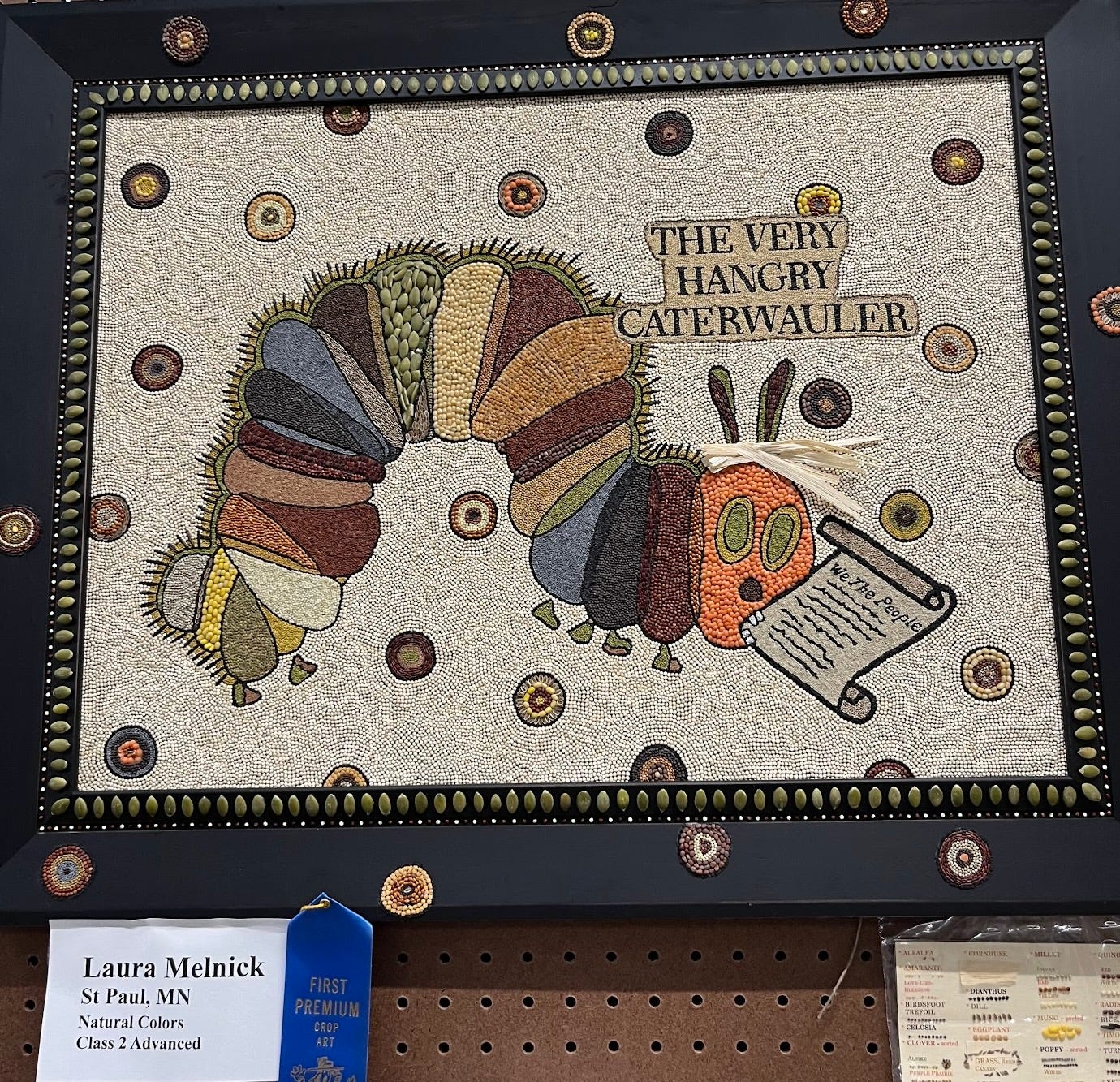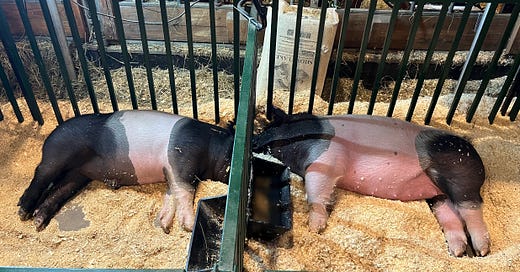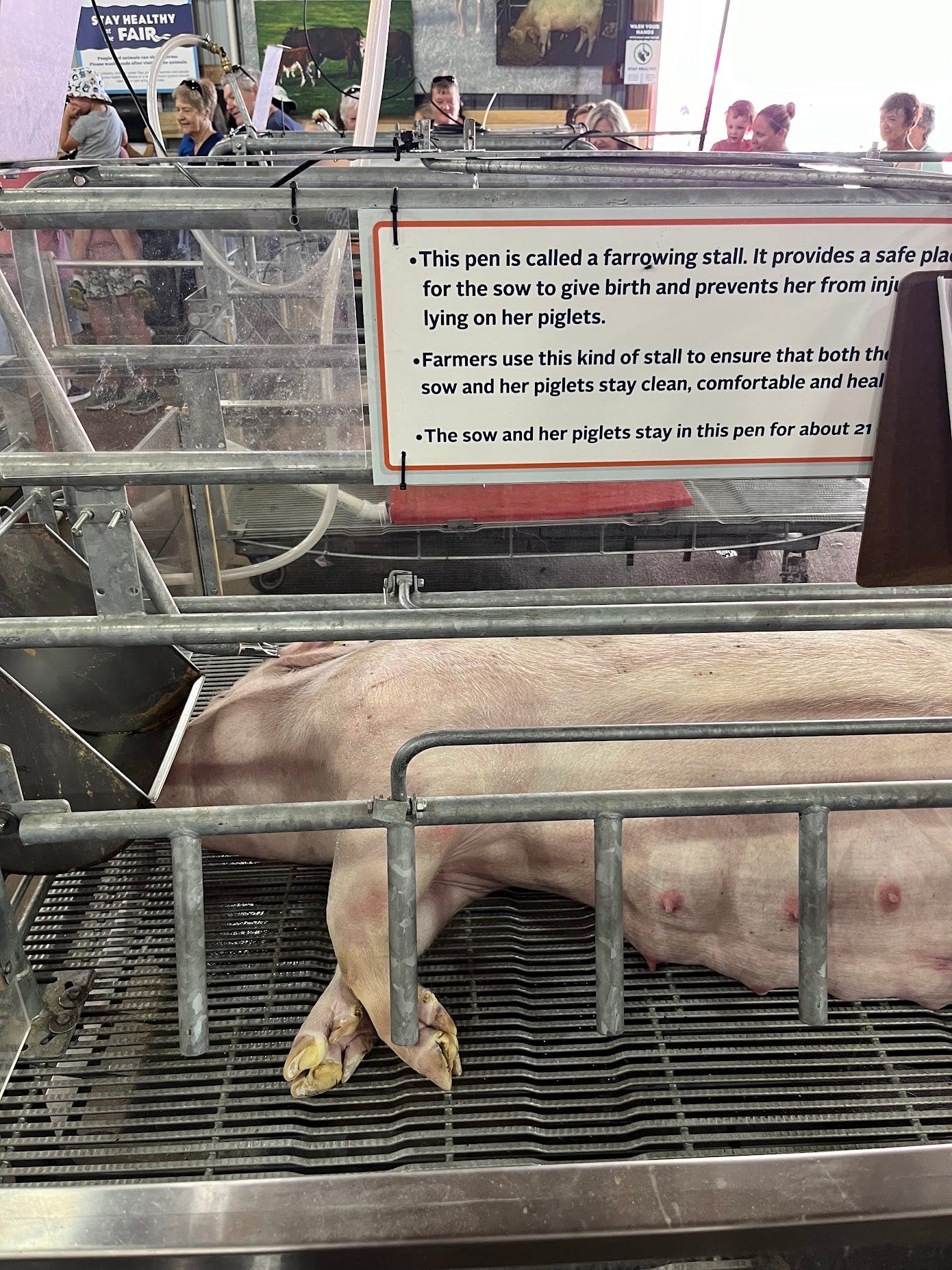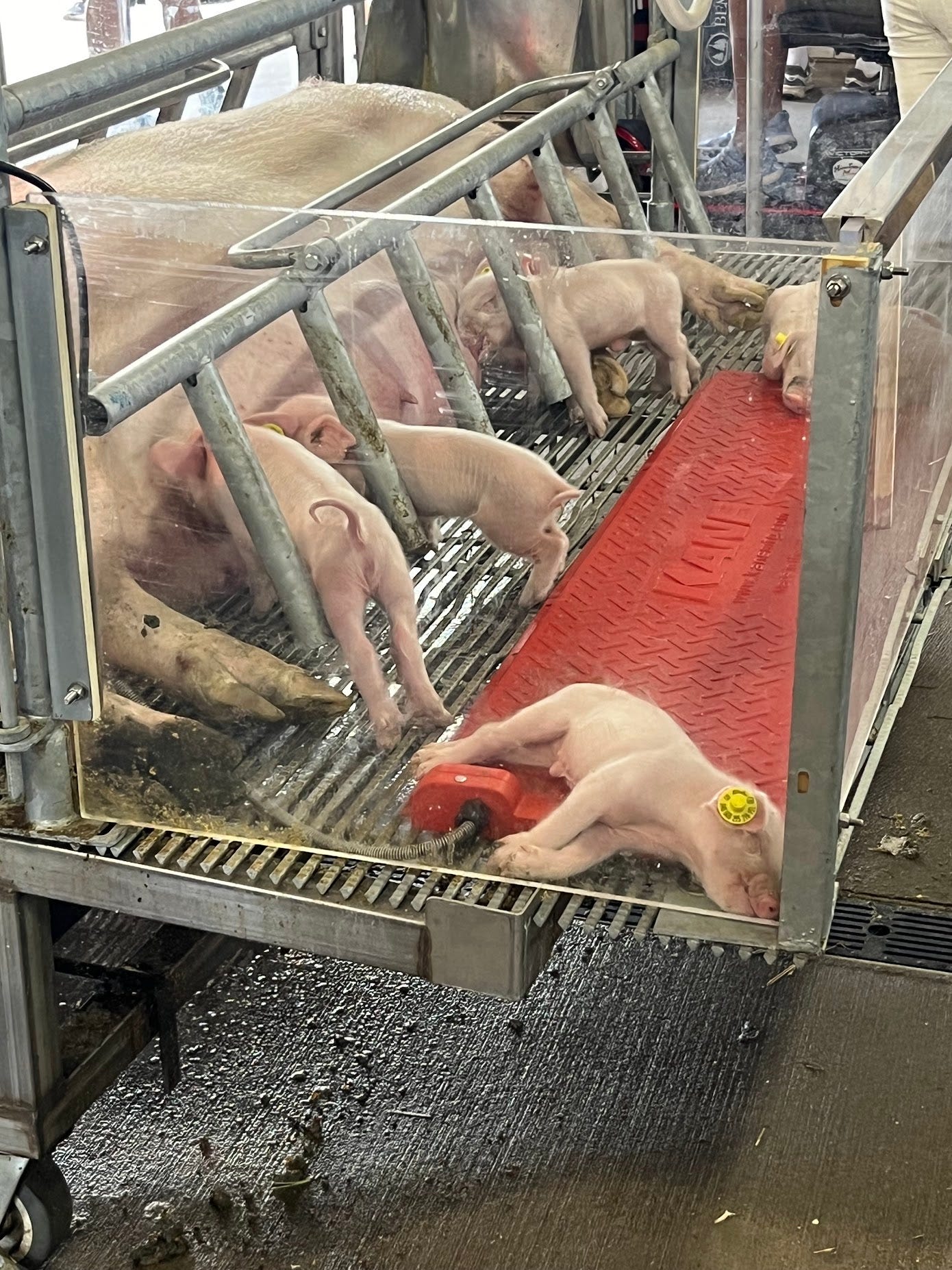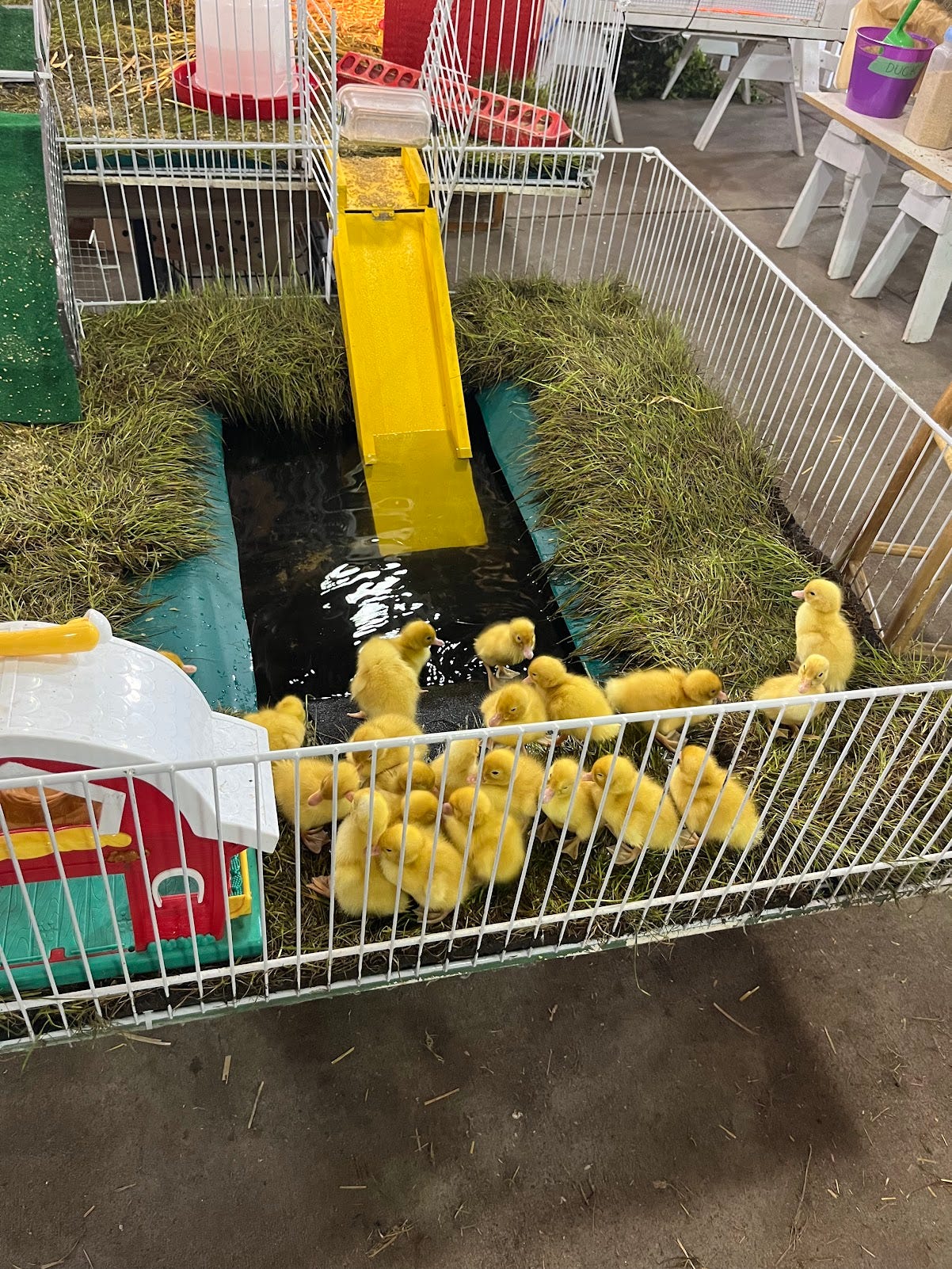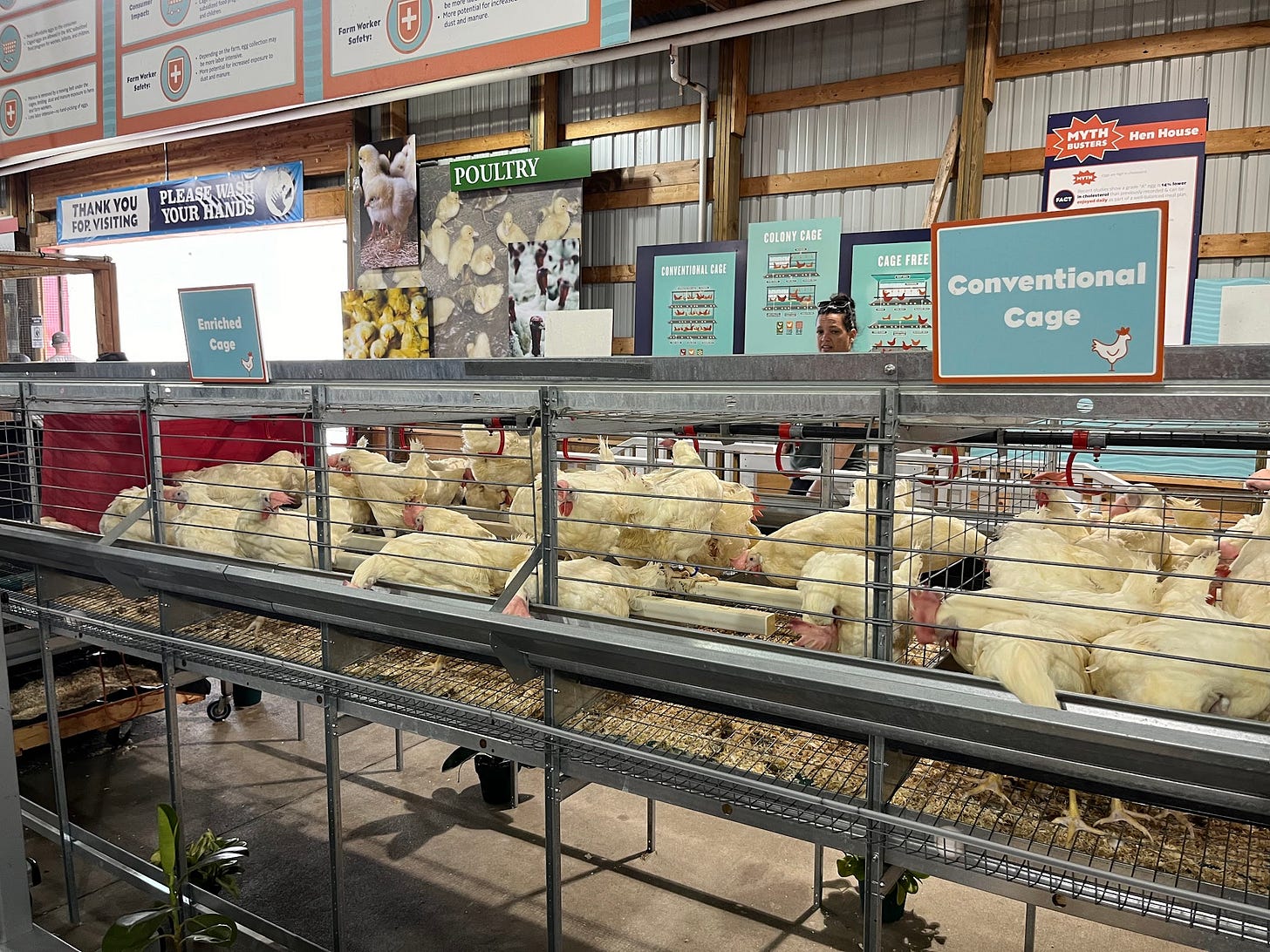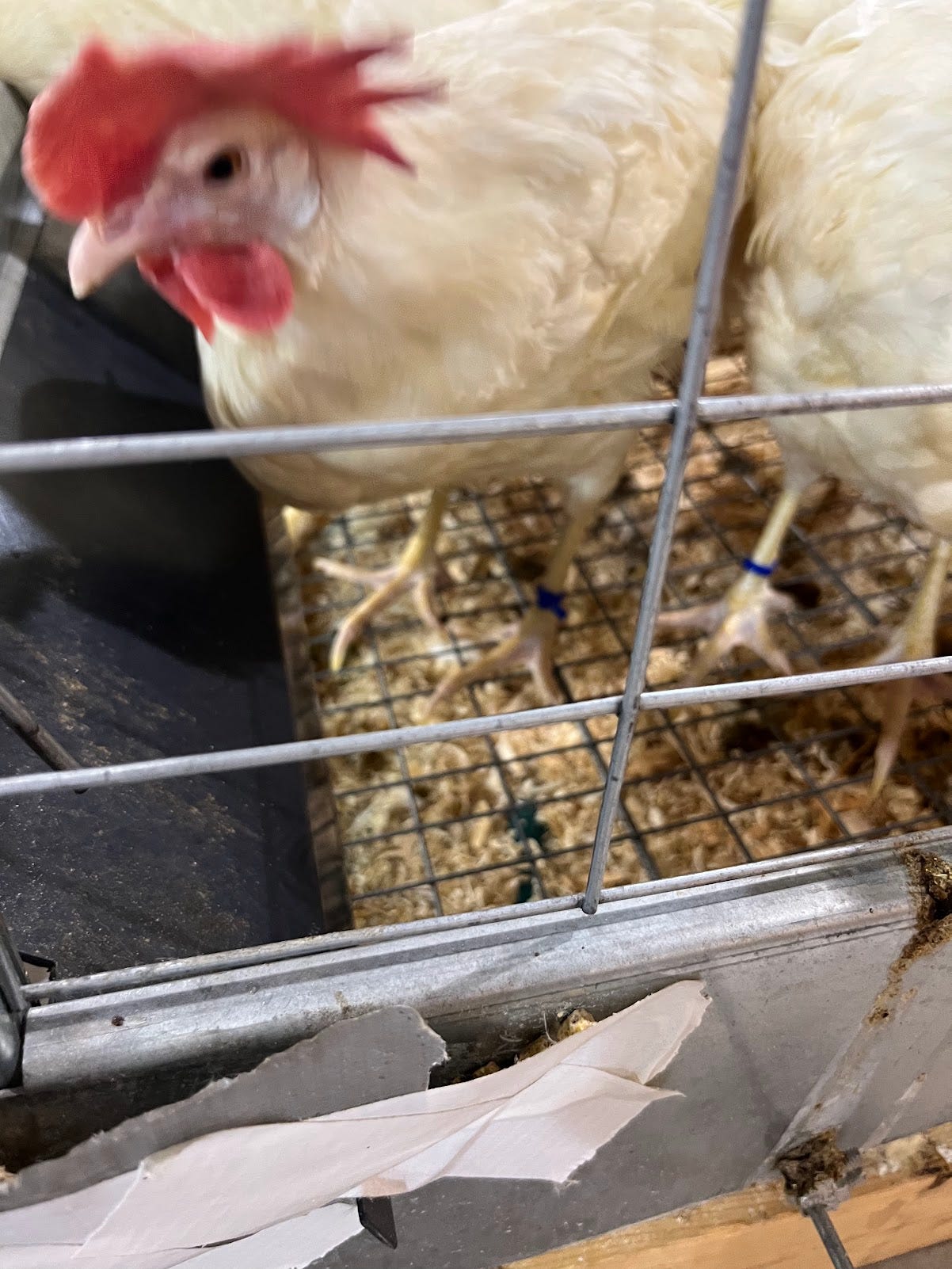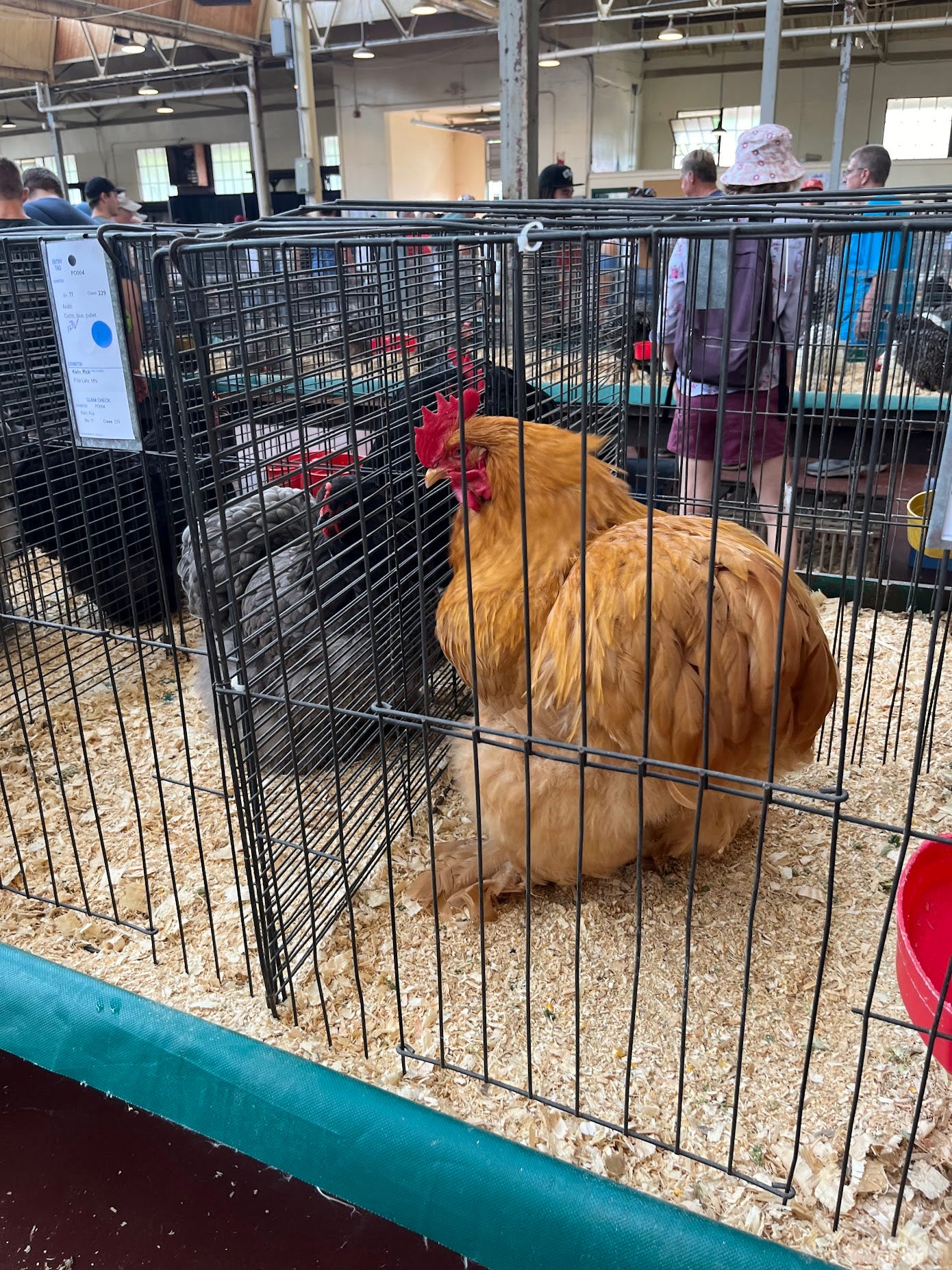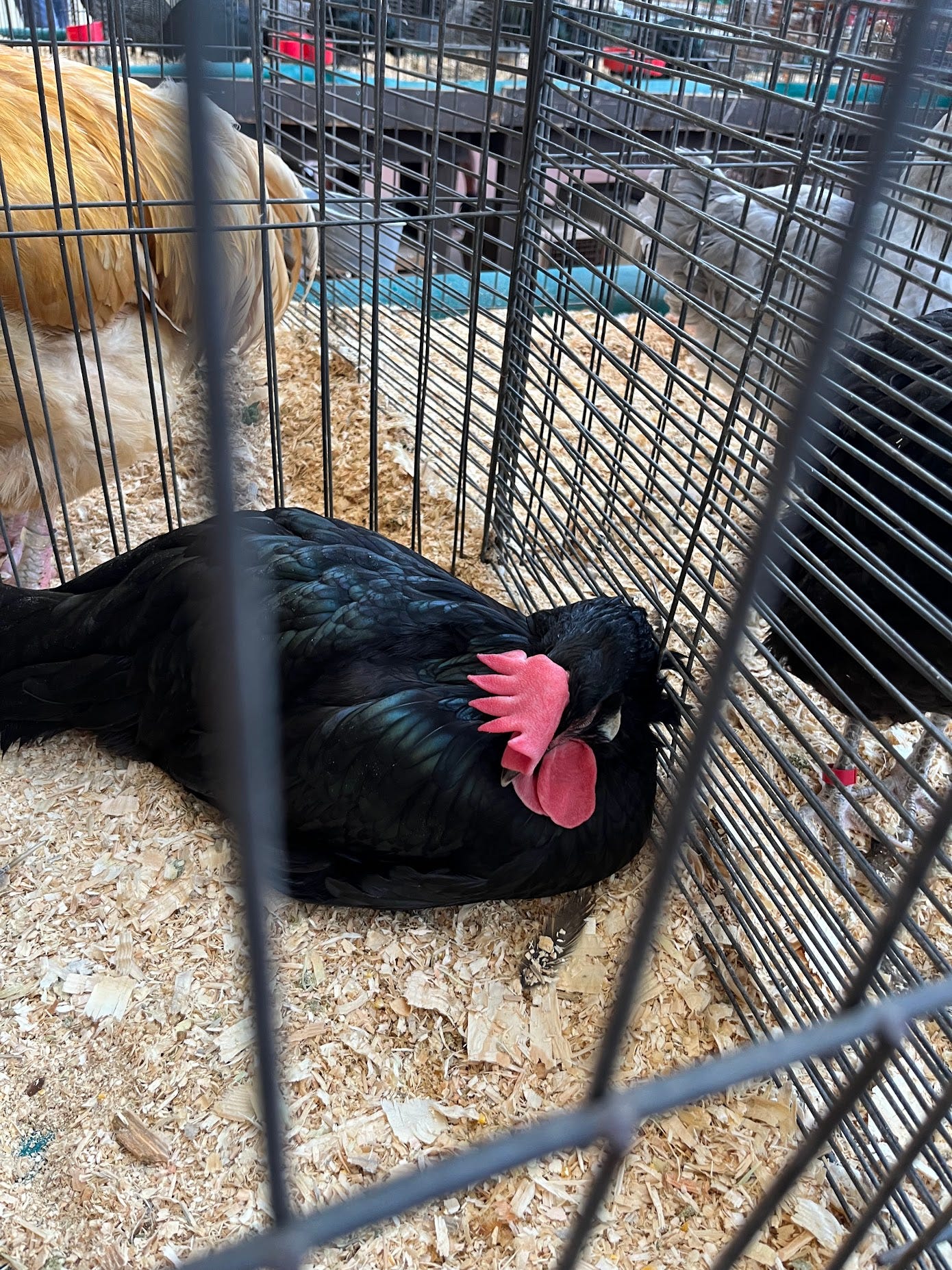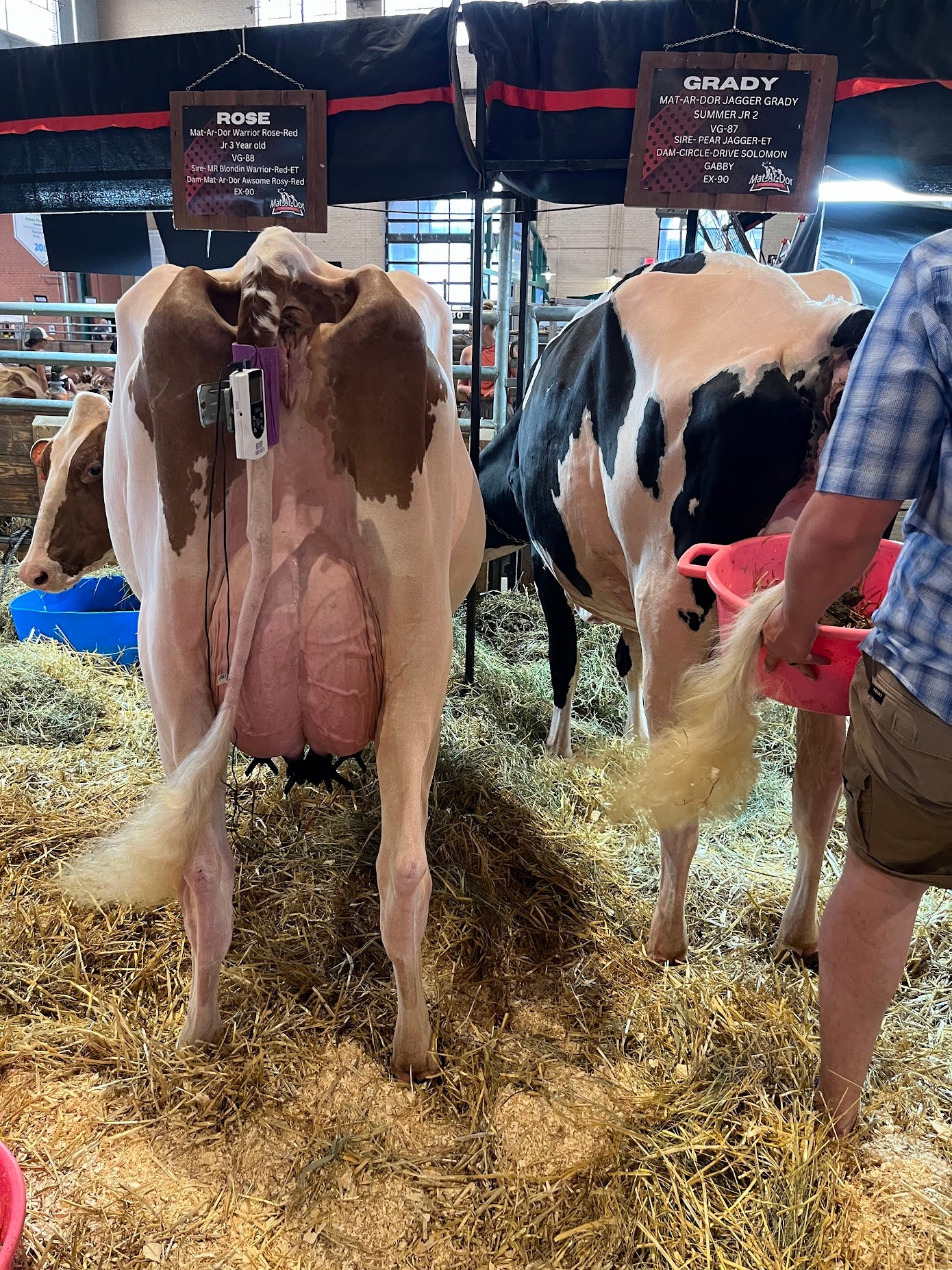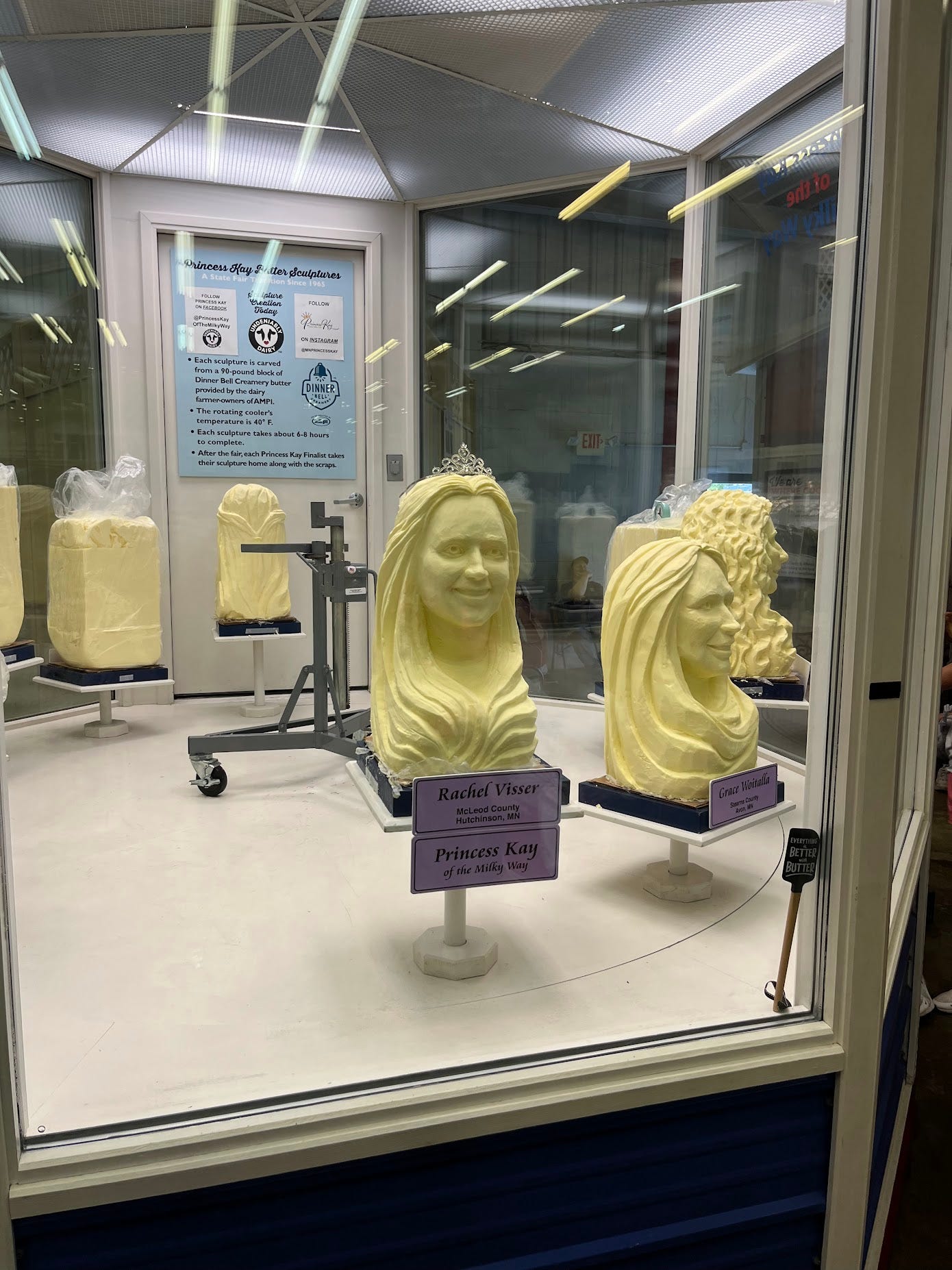The Unfortunate Animals of the Minnesota State Fair
Slaughterhouses having glass walls might do less than you think
The Minnesota State Fair is dominated by two main activities — looking at animals and eating animals. Many visitors do both at the same time. You can get a giant turkey leg outside the poultry barn, a pulled pork sandwich next to squealing piglets, and a juicy burger right across from where the cows are awarded prizes. Seeing the live versions of their food does not appear to affect anyone’s appetite.
I give the fair and the farmers credit for letting the public see how the animals are treated. It’s not the kind of treatment I would show off, but I appreciate that they let people like me see this stuff up close.
Overall, the fair is a fun time. I’d recommend it to anyone who wants to people watch, play carnival games, and view insanely good art made entirely out of crops. There’s even some awesome vegan food! But there’s a lot to that is tough to swallow for an animal lover. Here’s what I noticed checking out just a few of the roughly 10,000 animals on display.
Pigs
Most of the pigs I saw where in a building called The Miracle of Birth Center. This might be better named the cognitive dissonance center, full of wholesome and kind Minnesotans who stroll by awful looking torture devices while refusing to acknowledge anything amiss.
For someone who considers gestation crates one of the prime evils of factory farming, it was rather shocking to see them up close. The cramped space, listless mother pigs, and metal floor, made for a stark contrast with the relentless propaganda that the pigs are better off this way was. This is “safe.” The sows are “comfortable.” The 21 days in these pens fly right by!
More than any of the other animals I saw, the momma pigs seemed beaten down. You’d think they were dead. For those that had their last productive litter, they will be soon.
The cuteness of the piglets is overshadowed by the giant ear tags they wear, clearly marking them as property and future food.
There was one woman in the Miracle of Birth center who gave me a bit of hope. I overheard her say that the cage for the sow looked pretty small. She sounded concerned. The man, who I assume was her husband, wasn’t having it. “She can stand up,” he exclaimed, with a satisfied air of authority.
That was the end of the conversation. But I like to think a seed had been planted, in this mom and others. Maybe they’ll lead the charge one day to push for Minnesota, so proudly progressive, to follow California’s lead in banning gestation crates.
There were many other pigs on display throughout the fair, not just the moms and piglets. I was struck by two that were napping snout to snout in much the same way two affectionate puppies might.
These are “Grand Champions” not for their beauty, but for their potential to be turned into high quality pork. They are typically slaughtered around 5-6 months of age. Just a couple of babies, yet already getting in one of the final naps of their lives.
Birds
You can see all stages of the chicken’s growth cycle, from hatchling to egg-laying adult.
The baby bird display wins the award for most audacious humane-washing of the fair. That waterslide is too much. It gives visitors the idea that baby birds get to frolic around and play as they grow up. In reality the males chicks are often sent straight to an incinerator while the rest are left to fend for themselves in a barren barn.
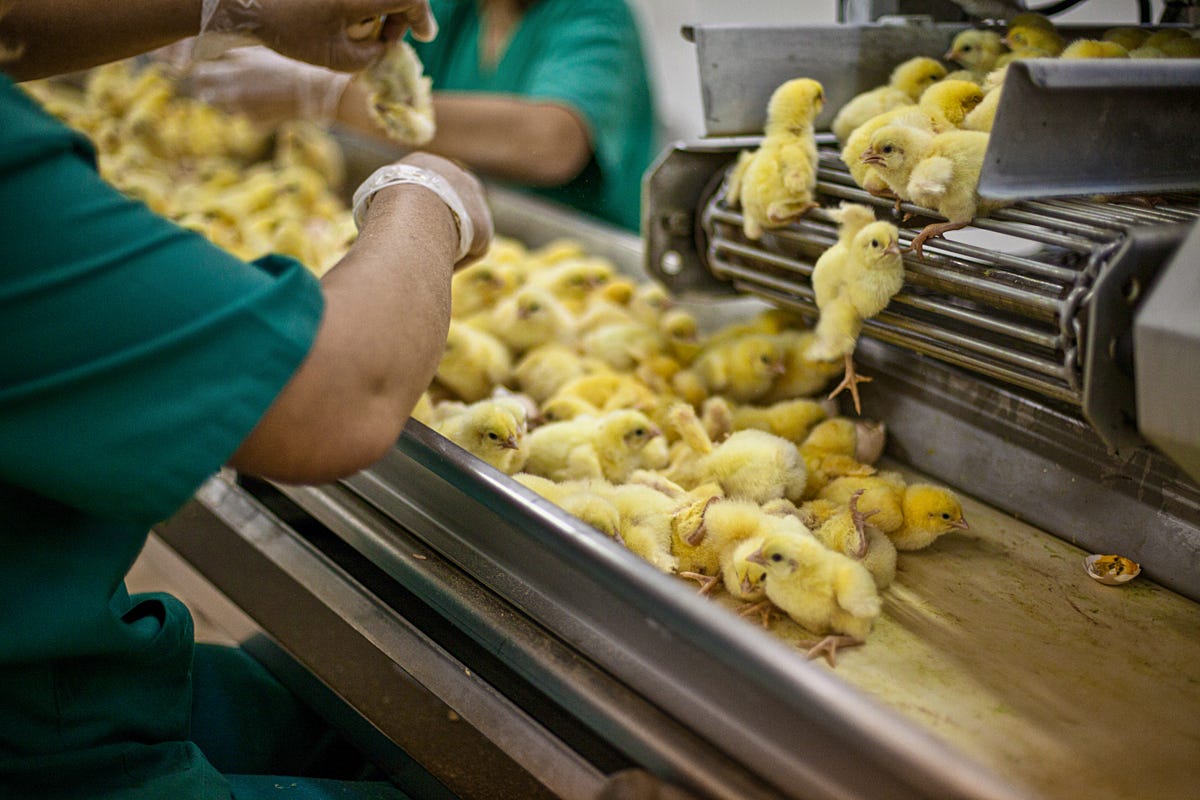
The older chickens were a much less popular display than the youngins. Perhaps because even for a jaded meat eating midwesterner, the life of an egg-laying hen looks depressing. They are so crowded, and the wire floor they stand on looks unbearable.
Those in an “enriched” setting get more space an a couple bars to stand on. We have set such a low bar.
What really jumped out to me was how uncomfortable it must be to stand on that metal surface for one’s entire life. It’s one thing to read about how chickens stand shoulder to shoulder on a hard, unforgiving surfae. When you see it up close, you get a better sense of how miserable it seems.
The free range pen looked much less awful than the alternatives.
Seeing this setup gave me a greater appreciation for the activists who spend all their time pushing for marginal improvements in the lives of hens. As confined and unnatural as the free range pen still is, if I were a hen, I’d give anything to be there instead of the conventional cage.
The fair also had show chickens, there for their beauty. Rows upon rows of them, looking much healthier than their farm chicken counterparts. They were on display in a hot barn, each in individual cages. Sometimes squawking, mostly just standing there or trying to sleep. I found it hard to appreciate their splendor while seeing them in their little prisons.
The strangest experience for me was watching the selection of a champion goose. They had a bunch of birds in a pen alongside several judges. One by one, loser birds were eliminated based on criteria I couldn’t understand. They were picked up and taken to a holding pen.
I know I am a hopeless anthropomorphizer, but these poor birds seemed scared. Harassed by the judges, they stuck by one another and tried to avoid being touched. The last goose standing, the one without any friends to lean on, the one who had to do this torturous dance the longest, the “winner,” was to my eyes the unluckiest of them all.
Cows
Overall, the cows seemed to be in the best shape of all the animals I saw. It still felt more like visiting inmates than admiring creatures who were happy to be there. Maybe it’s because cows are so sweet and lovable, like big puppies. I have spent time at a farm sanctuary feeding them bananas and watching how happy it makes them. These cows did not act like the sanctuary cows.
Also, my goodness are they enormous. We must be reaching the pinnacle of how big we can make a cow before it will be unable to walk.
I found it amusing that the farmers rushed over to pooping cows to make sure their feces didn’t spoil the nice display. Because poop on the ground would be gross, but massive veiny udders on an artificially inseminated cow with nozzles attached to it’s nipples is not off putting at all.
Animals are not part of the climate equation
The fair had a giant hall dedicated to showing how forward thinking and progressive Minnesotans are when it comes to using technology to combat climate change and environmental damage. Which was cool! They showed off stuff like electric snowblowers and fancy air quality monitoring devices. They talked about ecologically friendly ways of raising crops, building pollinator habitats, and reusing old stuff. There was a 20 foot tall tornado made of plastic bags. There were a couple of old dudes passionately telling passerby about how to bury an old pair of underwear in the back yard to help determine the soil quality.
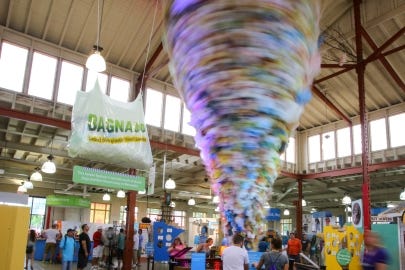
Nowhere in the hall was there acknowledgment of the animal agriculture industry’s massive climate impact. Livestock production accounts for almost 15% of all greenhouse gas emissions, but you wouldn’t know it from a stroll through the Eco Experience hall.
I figured this was the case while walking around the hall, and I confirmed it to be so when looking at the event schedule later.
But hey, at least there was live music.
It was like being at a lung cancer prevention exhibit in the 50’s that didn’t mention cigarettes.
Animals are a huge part of the fair until it comes time to mention the massive negative externalities associated with how we raise them.
Who am I kidding, a booth discussing animal agriculture’s climate impact wouldn’t get any attention anyway. People have butter sculptures to look at.
Theories of change
There’s a debate in the animal welfare movement about whether social change (e.g. convincing people to go vegan with activism) or food technology (e.g. creating delicious lab grown and plant based meat) is more likely to lead to better outcomes for animals. My trip to the fair pushed me a little more into the food technology camp.
Some vegans like to say that if slaughterhouses had glass walls, no one would eat animals. The fair didn’t have a slaughterhouse, but it had sows in gestation crates. To many in the animal welfare movement, those crates are considered an unequivocal horror. They should shock any sane person who encounters them. And yet the fair organizers thought nothing of putting many of them right out in the open for all to see. I don’t think it slowed down the sale of corn dogs.
After taking that in, it really feels like we need burgers and nuggets and sausages that taste exactly like the real thing to steer people away from their standard comfort food. Along these lines, I was encouraged by some recent surveys showing that there are now plant based nuggets which beat out real chicken nuggets in a taste test.
That’s not to say those pushing for social change should stop. I still think there is room for all kinds of approaches to help people better empathize with farm animals. I wouldn’t be writing this if I didn’t. For instance, with better activism we could get more people to question the signs saying the pigs actually like lying in tiny metal crates for 3 weeks straight.
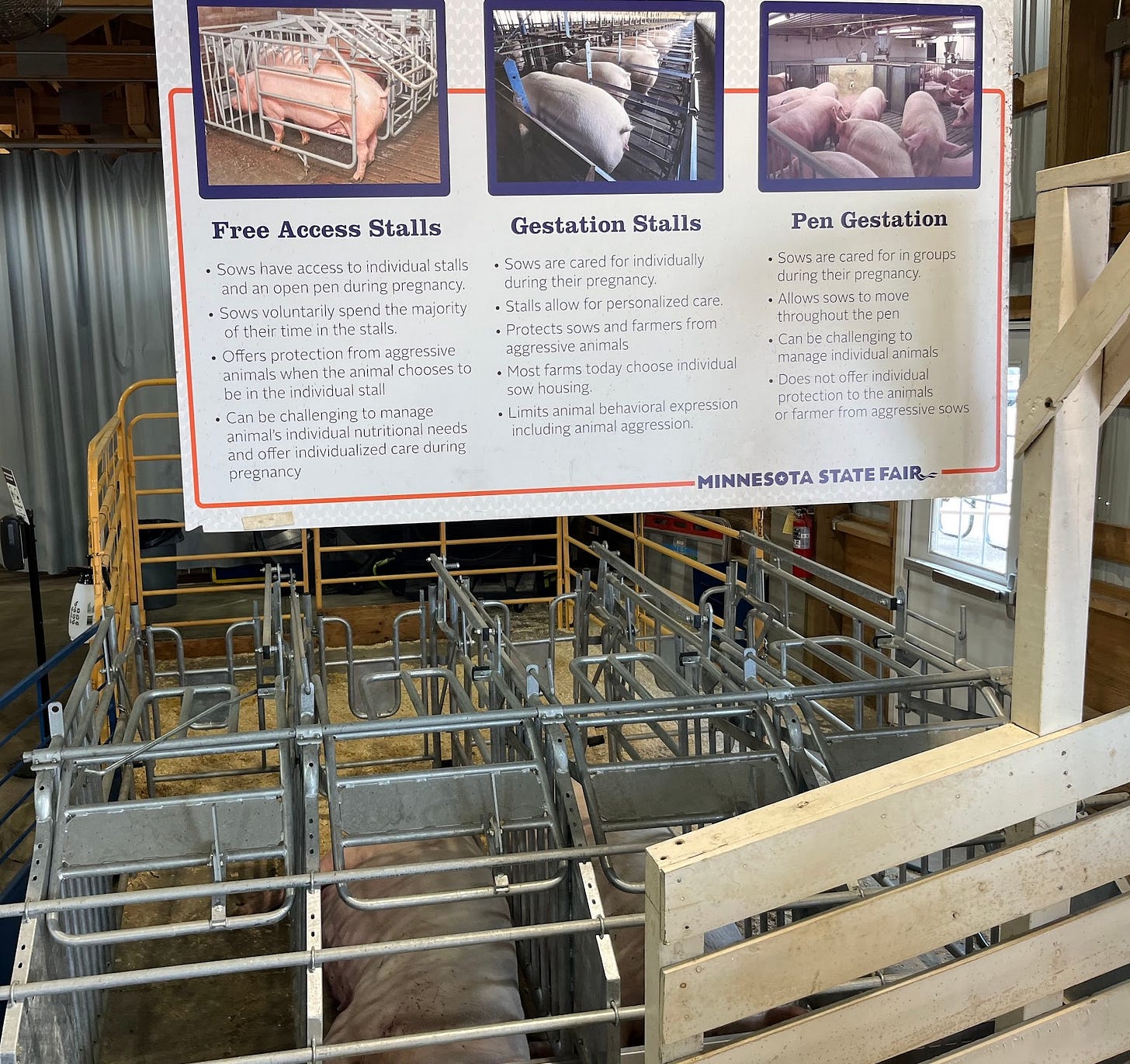
Maybe an effective piece of activism would be for someone to spend hundreds of hours creating an award winning piece of crop art that depicts the struggles of the pigs living in gestation crates. After all, I saw no bigger lines the whole day than at the seed art exhibition. All you big funders — get on it!
